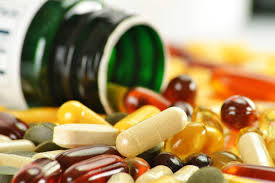PR Newswire
09-08-16
AUSTIN, Texas, Sept. 7, 2016 /PRNewswire-USNewswire/ — Sales of herbal dietary supplements in the United States increased by 7.5% in 2015, according to a new market report by the American Botanical Council(ABC).1 In 2015, herbal supplement sales totaled an estimated $6.92 billion, a new record. The report appears in issue 111 of HerbalGram, which was published in late August.
The annual Herb Market Report is based on sales statistics from the Chicago-based market research firms SPINS and IRI, as well as the Nutrition Business Journal (NBJ), a publication of New Hope Natural Media. The report covers only retail sales of herbal dietary supplements and does not reflect the sales of most herbal teas, botanical ingredients used in cosmetics, or government-approved herbal drug ingredients in over-the-counter medicines.
NBJ based its sales figures on data from market research firms, company surveys, interviews with major retailers and industry experts, and various secondary materials. SPINS worked with IRI to determine sales of herbal supplements in mainstream retail outlets, which includes military commissaries, select buyer’s clubs, and dollar stores. The collaborative SPINS/IRI reporting does not include convenience store sales.
In mainstream US retail outlets, SPINS/IRI estimated total sales of $943 million, a 1.5% increase in sales in this channel from 2014. NBJ, which includes convenience store data in its mass-market channel definition, estimated slightly higher sales of $1.2 billion.
For the third year in a row, horehound was the top-selling herbal supplement in mainstream retail outlets, with sales in this channel totaling almost $115 million. Horehound has been used since ancient times to relieve upper respiratory symptoms, and today, horehound commonly is incorporated into lozenges and cough drops for this same purpose.
Boswellia, despite ranking 39th in this channel, had perhaps the best year of any supplement sold in mainstream outlets, with a 674% increase in sales over 2014. Also known as Indian frankincense, this tree gum has been used for millennia in the traditional Indian medical system of Ayurveda for ceremonial, religious, and medicinal reasons. Today, boswellia herbal supplements are marketed for anti-inflammatory benefits, often in combination with turmeric, another traditional Indian ingredient known for its anti-inflammatory properties.
The roughly 3,500-word report, which is available online to the public, includes a table of the 40 top-selling herbal supplements in the mainstream channel (as determined by SPINS/IRI) and a table of the 40 top-selling botanicals in the natural channel (as determined by SPINS). It also includes a graph and table detailing total herbal supplement sales in all channels since 2000 (as determined by NBJ). HerbalGram‘s market report discussed a number of trends in 2015, including the rise of Ayurvedic herbs, the increased focus on inflammation, and the reduced sales of certain herbal supplements used for weight loss.
The 7.5% increase in sales of herbal supplements in 2015 was the second highest rate of growth for these products in more than a decade. This substantial increase happened despite the negative media coverage surrounding herbs in 2015, particularly in relation to the New York attorney general’s flawed investigations of some common herbal products.
“These figures confirm that strong consumer demand for herbs and herbal products continues in the US, based on a consumers’ interest in natural and relatively low-cost ways to maintain their health,” said Mark Blumenthal, founder and executive director of ABC.
Reference
1. Smith T, Kawa K, Eckl V, Johnson J. Sales of herbal dietary supplements in US increased 7.5% in 2015. HerbalGram. 2016:111;67-73. Available at: http://cms.herbalgram.org/

